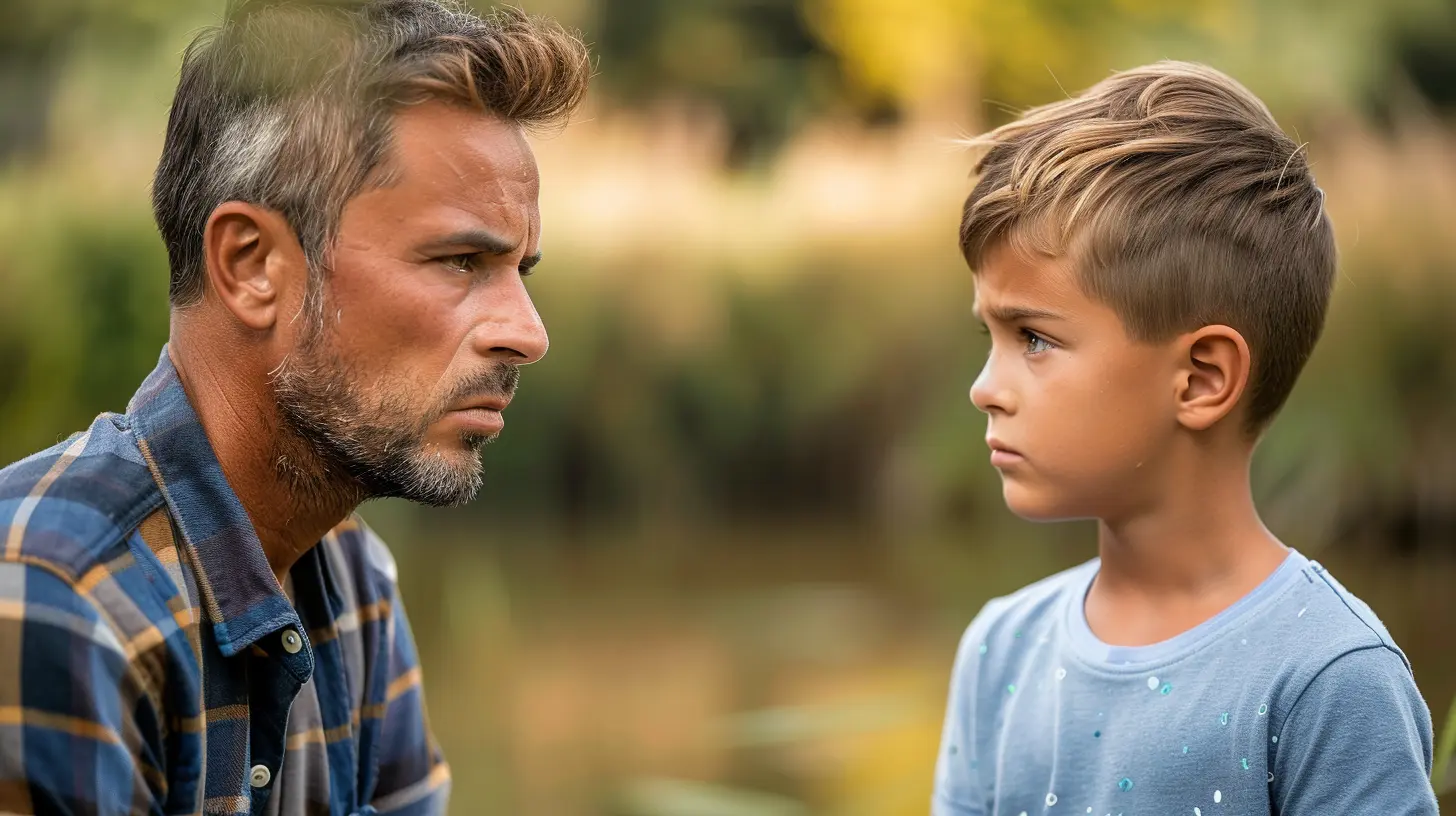Why Saying “No” is Important: Teaching Limits and Boundaries
7 September 2025
As parents, we all want to raise kind, respectful, and well-adjusted kids. We dream of children who grow up to be confident, independent, and emotionally intelligent. But here's the thing — that doesn't happen by accident. One of the most powerful tools we have in our parenting toolbox isn't some fancy toy or a miracle parenting book; it's the simple word “no.”
Yes, saying “no” can feel harsh. It can lead to tantrums, tears, and even mom guilt (we’ve all been there). But the truth is, “no” is not a bad word. When used with love and consistency, it becomes a life-defining lesson in setting limits and teaching boundaries. Let’s dive into why “no” is so essential — not just for your sanity as a parent, but for your child’s development as a human being.
Why We Struggle to Say “No”
Let’s be real — saying “no” isn’t easy. Kids are persuasive little negotiators, especially when it comes to getting what they want. There’s also that internal voice that whispers, “Is this going to mess them up?” or “Am I being too strict?”We’re conditioned to associate “no” with negativity. Nobody wants to be the bad guy, and in a world of positive parenting and gentle guidance, it can feel like setting limits is going against the grain. But parenting isn’t a popularity contest, and your job isn’t to make your child happy 24/7 — it’s to prepare them for life.
What Happens When Kids Don’t Hear “No”
Let’s imagine a world where your child never hears the word “no.” Sounds like a paradise for toddlers, right? But here’s the catch: without limits, kids struggle to understand the concept of boundaries.If children always get what they want, they never develop frustration tolerance. They don’t learn how to handle rejection, solve conflicts, or wait their turn. They expect the world to cater to them — and spoiler alert — life doesn’t work that way.
Think of a child as a plant. Without boundaries (the pot), their roots have nowhere to grow properly. They spread out aimlessly, making the plant unstable. The same goes for children emotionally. Boundaries give kids a safe space to thrive.
The Psychology Behind Setting Limits
From a developmental standpoint, saying “no” helps kids understand that there are rules in their world — that actions have consequences. Boundaries create predictability, and children actually feel safer when they know what to expect.Psychologists suggest that children who experience firm but loving boundaries tend to grow up more secure and self-regulated. They have better impulse control, are more empathetic, and have stronger social skills. Why? Because they’ve been taught that they can’t always have their way — and that’s okay.
Saying “No” Builds Emotional Resilience
Let’s face it: life is full of “no’s.” No, you didn’t get the job. No, the relationship didn’t work out. No, you can’t always be right. If kids don’t learn to handle disappointment when they’re young, they’ll struggle massively as adults.Saying “no” prepares them for the real world. It builds grit, patience, and perseverance. It’s the emotional vaccine they need to handle rejection, failure, and frustration without falling apart.
Think of it like a mental workout. Every time your child hears “no” and learns to cope with it, their emotional muscles grow a little stronger. Eventually, they’ll be able to manage those big feelings all on their own.
Boundaries Teach Respect and Empathy
This one’s big. When you consistently say “no” to hurtful behaviors — hitting, biting, yelling, or disrespecting others — your child begins to understand that their actions affect those around them. They learn empathy by recognizing that other people have feelings and limits too.Boundaries aren’t just rules — they’re life lessons in respect. When parents model and enforce limits, kids aren’t just learning how to behave. They’re learning how to exist in a community, in a family, and eventually, in relationships.
Saying “No” Builds Trust
Believe it or not, limits can increase the bond between parent and child. When you say “no” with consistency and kindness, your child starts to trust that you mean what you say. That predictability is comforting.Kids don’t always say it out loud, but they crave structure. They want to know someone is in charge — someone who loves them enough to say, “This isn’t okay,” even if it results in a meltdown. It’s in those tough moments that your child sees you as someone they can rely on.
How to Say “No” (Without Losing Your Cool)
Now, you might be wondering — how can I say “no” effectively, without triggering a nuclear-level tantrum every time?Let’s break it down:
1. Stay Calm and Confident
Kids feed off your energy. If you’re anxious or unsure, they’ll push harder. If you’re calm and confident, they’re more likely to accept your decision.Example: “I know you’re upset, but we’re not buying candy today. Let’s pick a healthy snack instead.”
2. Be Consistent
If “no” means “maybe” sometimes, your child will keep testing you. Stay firm so your child knows boundaries don’t shift just because they whine… loudly.3. Explain (Age-Appropriately)
You don’t need a TED Talk every time, but offering a short reason can help.Example: “We don’t jump on the couch because it’s not safe. You could get hurt.”
4. Offer Alternatives
Saying “no” doesn’t mean shutting conversation down completely.Example: “No, we can’t go to the park right now, but we can play outside after dinner.”
5. Don’t Apologize for Setting Limits
There’s no need to follow every “no” with guilt. You’re not being mean — you’re being responsible.When Saying “Yes” is Actually a “No”
Sometimes we say “yes” just to avoid a scene — in the car, at the grocery store, or right before bedtime. We’ve all been there. But those quick “yes” moments can come back to bite us.Why? Because every time we say “yes” when we really mean “no,” we send the message that limits are up for negotiation. It confuses our kids and teaches them that persistence (or whining) pays off.
Next time, pause and ask yourself: Am I saying yes because it’s convenient or because it’s truly in their best interests?
The Long-Term Payoff of Boundaries
Sure, saying “no” might cause some tears now. But the long-term benefits are more than worth it. You're not just dealing with a five-year-old who wants ice cream for breakfast — you're raising a future adult. One who knows how to respect others, delay gratification, handle disappointment, and make thoughtful decisions.Boundaries now mean better relationships later — with friends, teachers, partners, and even themselves.
What About When They Say “No” to You?
Ah yes, the reversal. As toddlers grow into teens, they’ll start saying “no” right back — and that’s a good thing. It’s an early sign of autonomy and a healthy step in their development.Your job is to model respectful communication. Encourage them to express opinions, say “no” to peer pressure, and advocate for themselves — but within reason and respect.
Teach them that it’s okay to say “no” — just like you did. But remind them that choices come with consequences, and we all have to live within certain boundaries.
Final Thoughts
Saying “no” isn’t about being controlling or harsh — it’s about being wise. It’s about seeing beyond the moment and teaching your child lessons that will shape their mindset, character, and behavior for years to come.So don’t fear the word “no.” Embrace it. Use it with intention, with love, and with consistency. You’re not being mean — you’re being a parent. And that’s one of the toughest, most important jobs in the world.
all images in this post were generated using AI tools
Category:
Parenting SupportAuthor:

Kelly Snow
Discussion
rate this article
1 comments
Xavi Franco
Setting clear limits through consistent “no” responses is essential for healthy child development. It teaches kids about boundaries and helps them understand consequences, fostering resilience and respect. Embracing this aspect of parenting ultimately strengthens their ability to navigate the world.
September 15, 2025 at 2:45 AM

Kelly Snow
Thank you for your insightful comment! I completely agree—consistently setting limits through "no" responses is crucial for children's growth and helps them build essential life skills.


